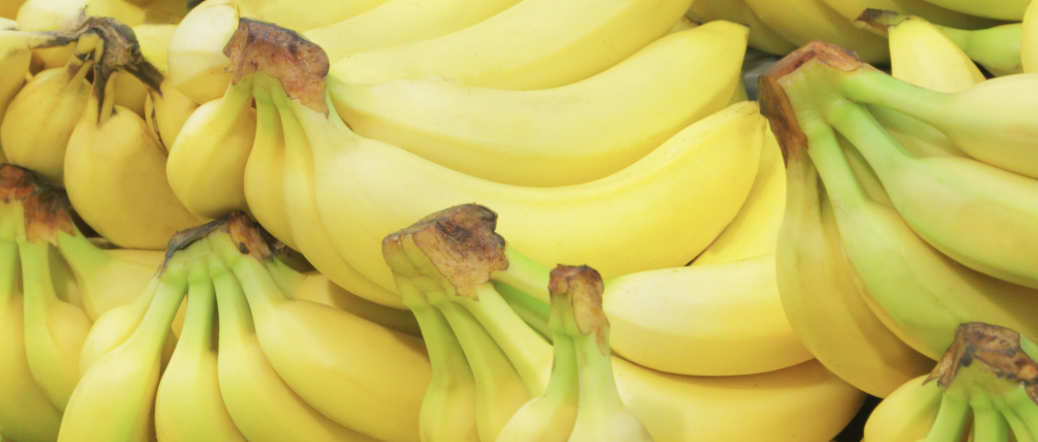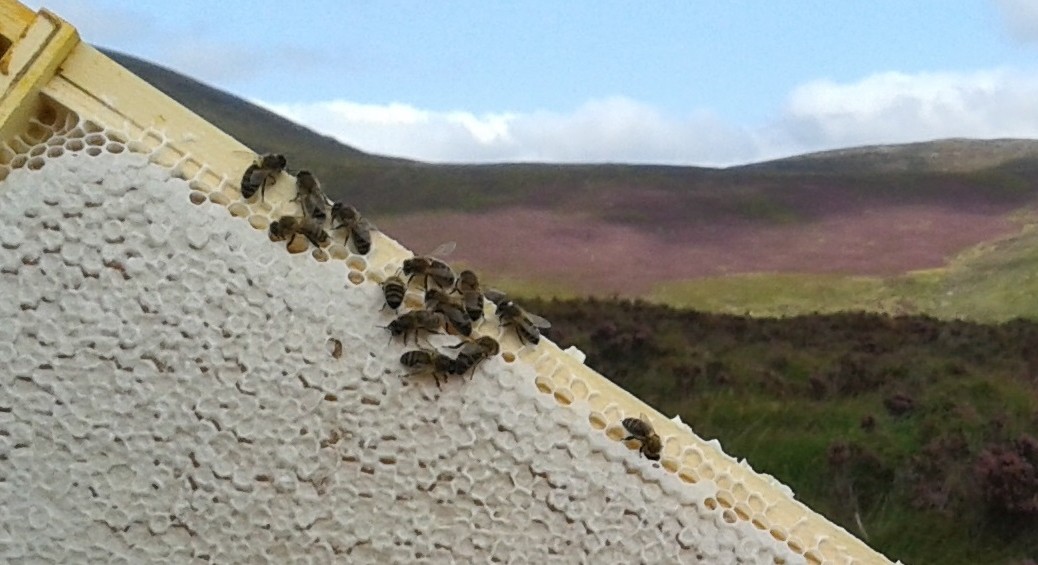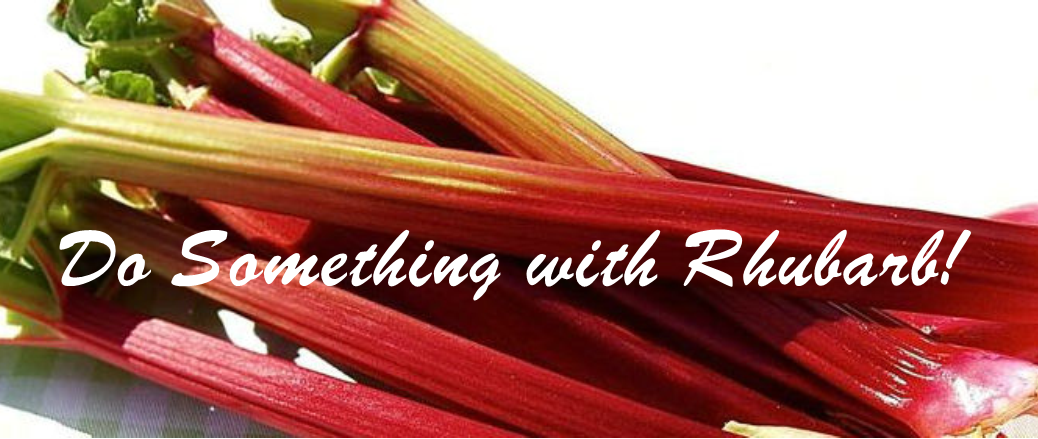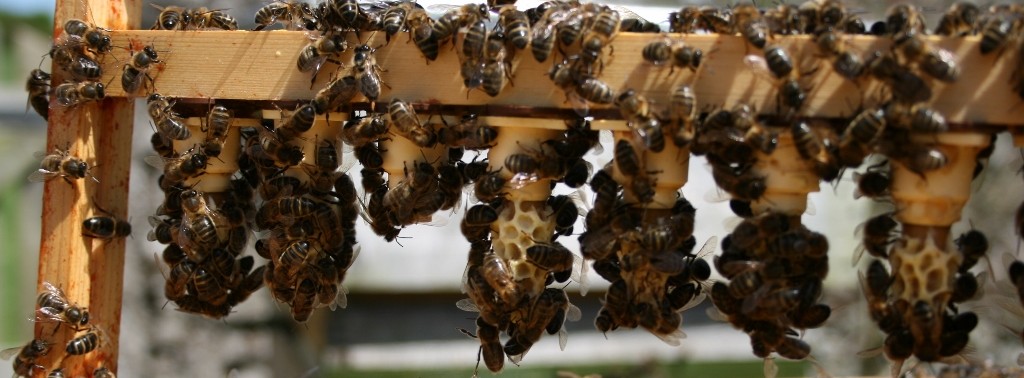So – the banana thing. Here’s what was left after a month, a black and shrivelled thing with a strong smell of propolis. But what are the conclusions if any? Continue reading Chalkbrood Banana Results
Category Archives: Things to do in July
Chalkbrood and the Banana Thing
Have you heard the Banana Thing – the one about the banana in the beehive?
While there is ‘anecdotal evidence’ for bananas as a cure for chalkbrood – it is not scientifically proven.
However, it isn’t scientifically disproven either and there’s no smoke without fire. Read on… Continue reading Chalkbrood and the Banana Thing
Heathering
In this part of the world – July is the time to get the bees to the heather – if the flow is early you’ll miss it. But before you do that – have you got a heather site?
Here are some notes on what makes a good one. Continue reading Heathering
Honey Bee Colony Assessment
Bee improvement is not difficult – anybody can do it and in fact every beekeeper should do it. The first step is to assess your colonies for a full season and record the data in a Colony Assessment Sheet. It will take a full season because the bees often do not show their true colours till they are big and strong and start to throw their weight about. Once you have the data you can compare colonies systematically and objectively then select stocks for breeding and stocks for culling.
The sheet below has been designed to record both Colony Assessment Data and routine beekeeping information from each visit. Click it for a better view. Scroll down and I’ll walk you through it…
How to unite bees – the Third Box Principle
Rationale
Once upon a time I used to keep mice. They don’t swarm but they are territorial and they do fight. If you try to introduce two mice, of any or either sex, by simply dropping one into the cage of the other they will fight. However, if you put the two of them together in a third cage they will get along like a house on fire. This is what I call ‘the third box principle’ and the same thing applies with bees.
Before we go any further I should state that the Third Box Principle is not an explanation of bee behaviour but it is a mental model which helps the beekeeper to ‘put a handle’ on what is observed. It is also a particularly helpful thing to know when you are in the thick of the latest bee conundrum and wondering what the hell to do next – it can give you extra options.
Here are some useful things to do with it:
Continue reading How to unite bees – the Third Box Principle
Summer Oxalic Acid Varroa Treatment
Oxalic Acid
Oxalic acid is a very effective treatment for Varroa but only during broodless periods when the kill rate can be above 90%. When brood is present the kill rate is closer to 30% as most of the Varroa are in the brood where this acid cannot reach them. Click here for more on oxalic acid.
For this reason oxalic acid tends to be used during the mid-winter broodless period – if there is one!
However, winter is not the only time bees are broodless and oxalic acid can also be used during summer broodless periods when the Varroa are phoretic (out and about on the bees).
Summer Treatment
Imagine a swarm…
How to take a crop of heather honey
Ling heather (Calluna vulgaris) honey is out there on its own for flavour and character. It is rich, reddish amber in colour with a musky flavour; open the jar and the scent of the hills will fill the room. Turn the jar upside down and it won’t budge – this is because it is thixotropic – in other words it forms a viscous gel and will not flow which means it cannot be spun out of the frames like other honeys but has to be pressed from the comb or sold in the comb either as sections or cut-comb.
Heather honey is much sought-after (lovely heather honey recipe here) and commands a great price but to get a crop is not easy so the beekeeper needs to know about the Known Unknowns and Known Knowns. Not to mention the Unknown Unknowns. Continue reading How to take a crop of heather honey
Quick queen-bee introduction – Matchbox Method
There are many reasons during the course of the season why you might need to replace a queen bee. She could have become a drone layer, you may have killed her by accident or it could be that the bees need to be improved by the addition of a new queen with better genes. Whatever the reason, you can’t just put her in because they will almost certainly kill her – although I have known cases where clipped queens have fallen to the ground in failed swarming attempts and have then made their way back up the stand legs and into the front door of a queenless neighbour! Continue reading Quick queen-bee introduction – Matchbox Method
Overheating Apideas
If, like me, you have placed your Apidea/s in a spot that overheats in very hot weather you can easily cool them down and stop them from absconding by draping a white flannel or a strip of pale towelling over them like an Arab headdress. The pale colour will reflect a lot of the heat and if you periodically drench the cloth with cold water the problem is solved.
Alternatively you could just put a big sponge on the roof and wet it at intervals. Make sure there is a slope is away from the entrance or water will run in.
Also, make sure that you have the ventilation grille partially open so the bees can circulate the air. If you fully open the door you will fully close the grille so avoid that – see the photo above.
Click here for instructions on how to set up an Apidea
Click here for how to overwinter an Apidea
Click here for how to feed a winter Apidea
Copyright © Beespoke.info, 2014. All Rights Reserved.
Queen Rearing Timeline
It always seems to take an eternity for these new queens to get laying and the spectre of queenlessness and laying workers rears its ugly head. But when you sit down and actually work it out it, it’s often your expectations that are out of whack.
Remember she matures for 4 days after she emerges then even if she goes straight out and mates she won’t start to lay for another 4 or more days after that. So don’t waste your time looking for eggs till she’s 2-3 weeks old because if she’s not laying before then there’s nothing you can do about it anyway except gnash your teeth.
Have a look at this diagram instead – it’ll help keep your expectations on track.
Click it for a bigger version.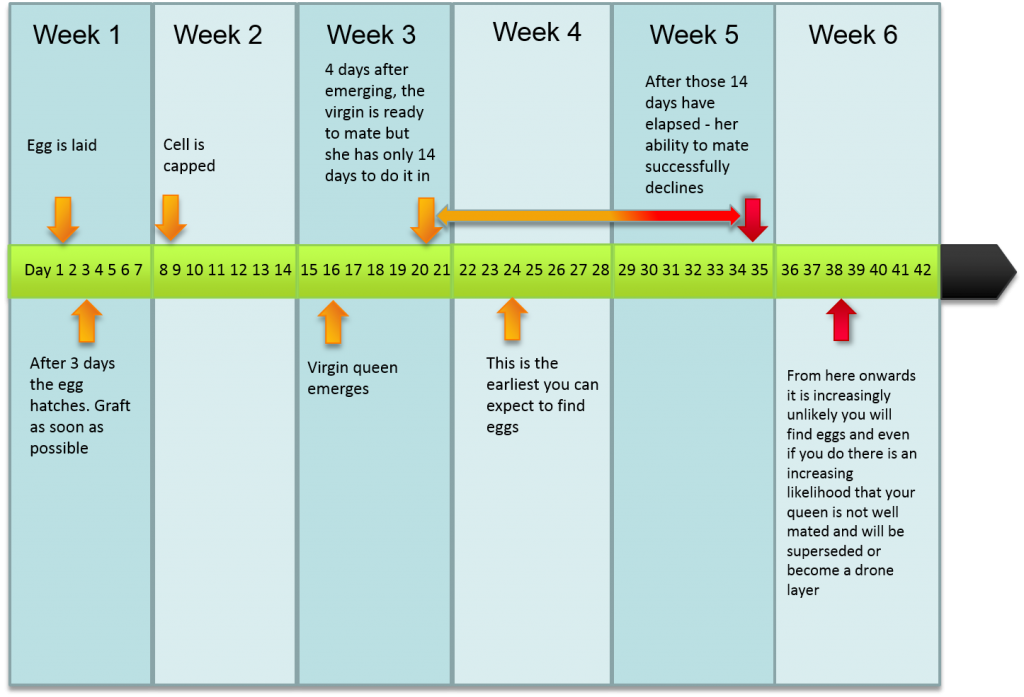
Or click the thumbnail below for a queenrearing timeline for Jenter kit with a Cloake board system
Click here for How to set up your Apidea
Click here for a Queen Rearing Timetable for Jenter kit or grafting with Cloake board cell raiser.
Copyright © Beespoke.info, 2014. All Rights Reserved.
